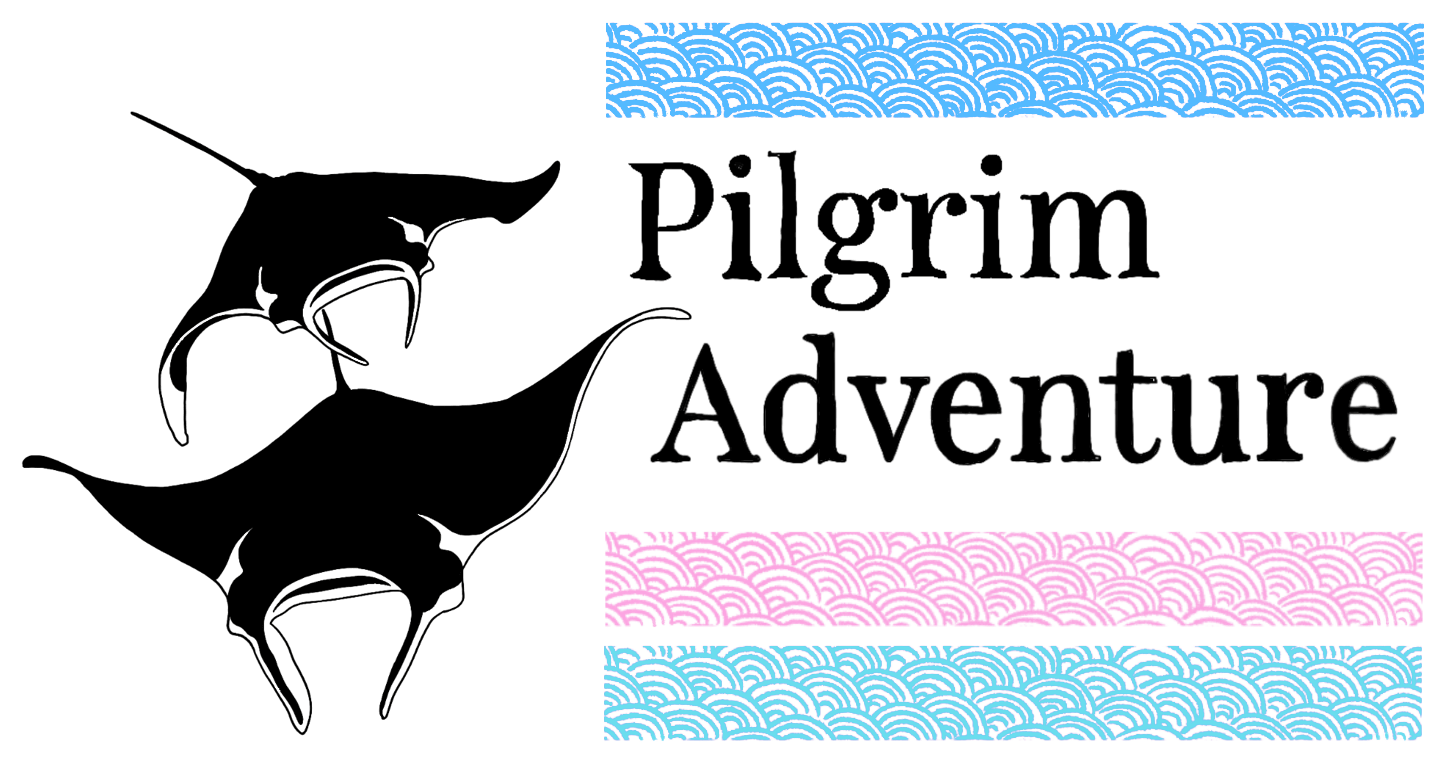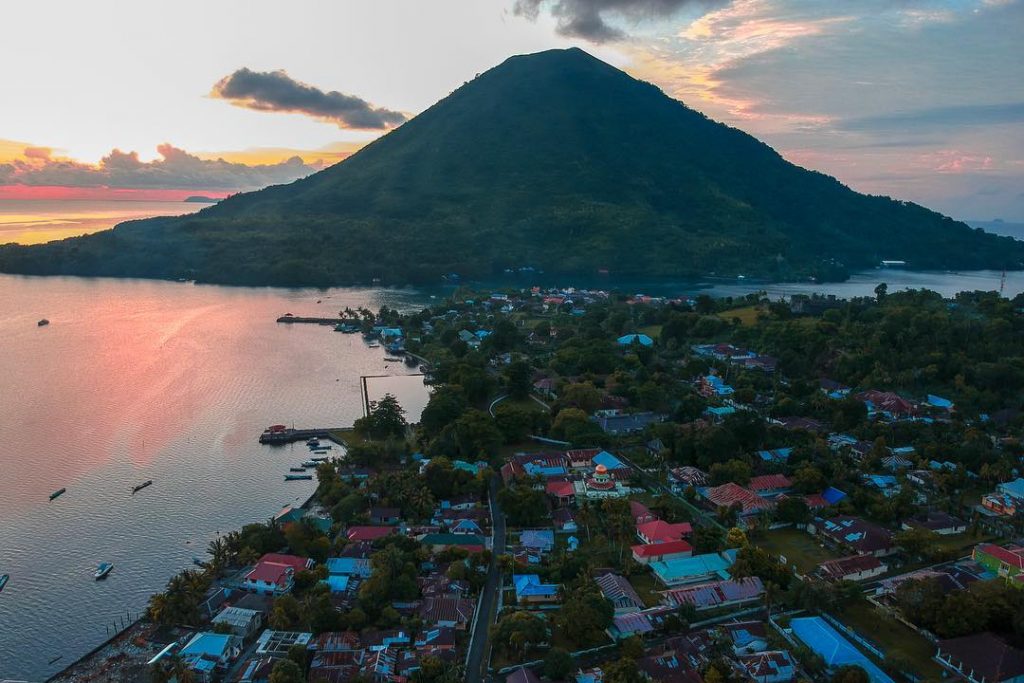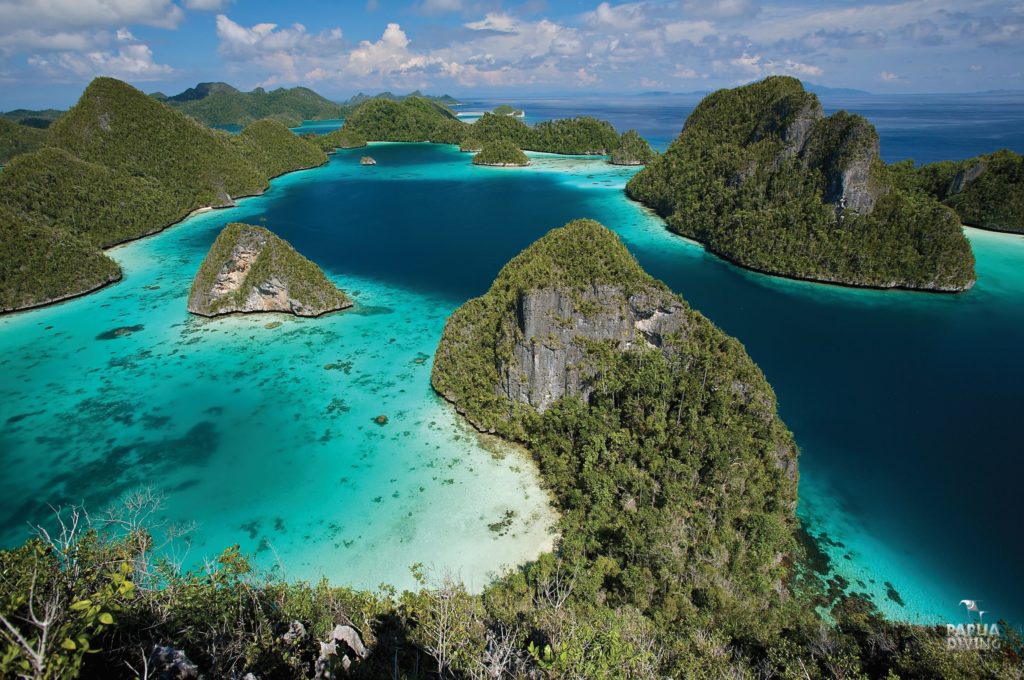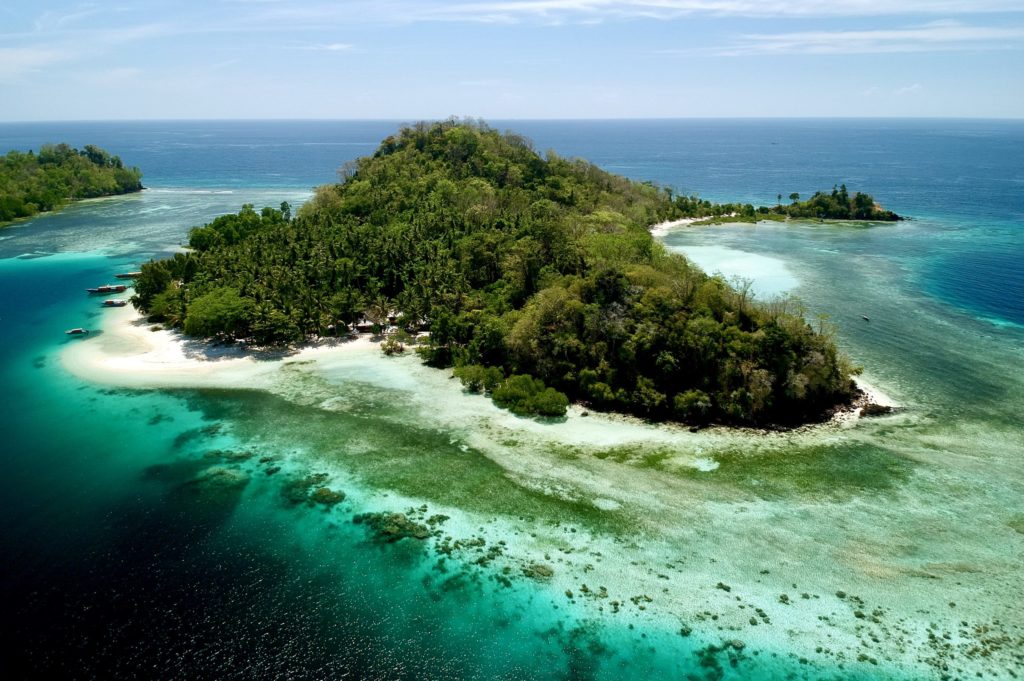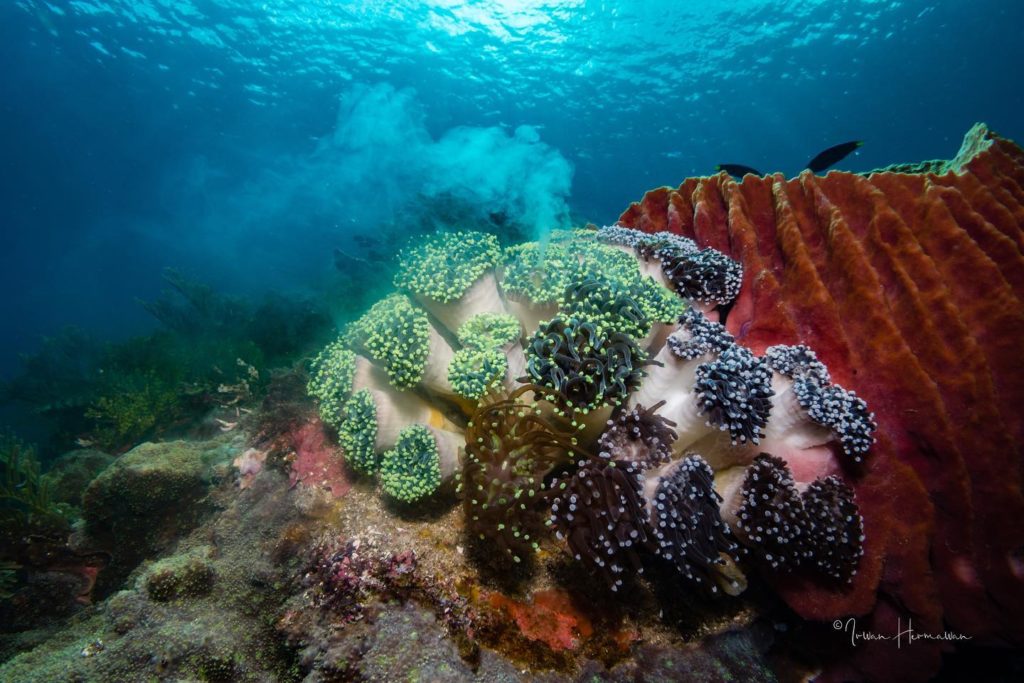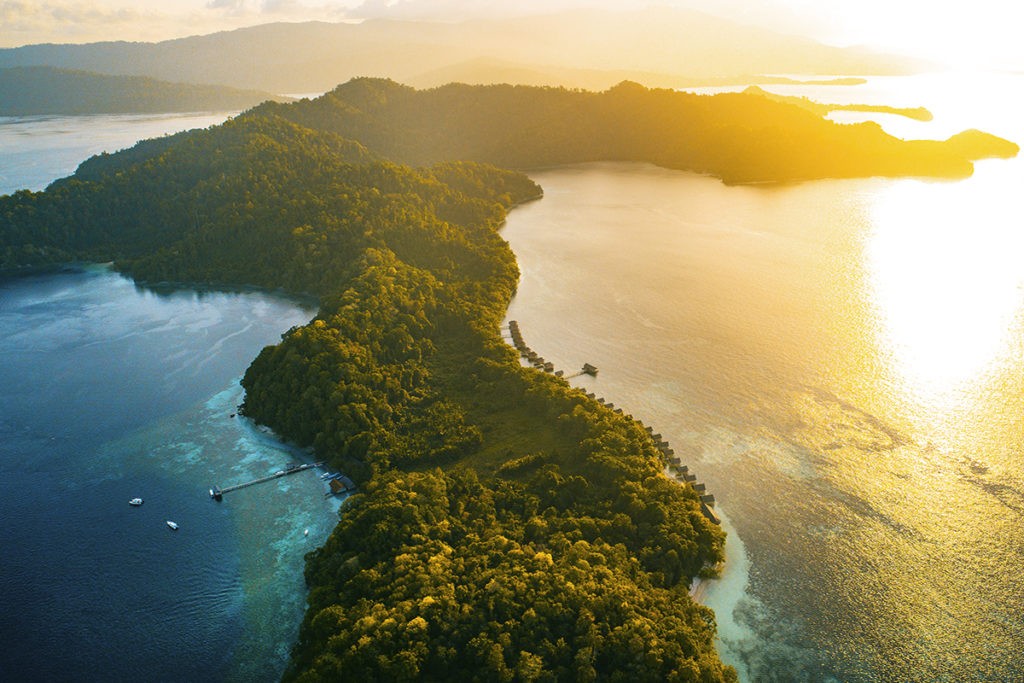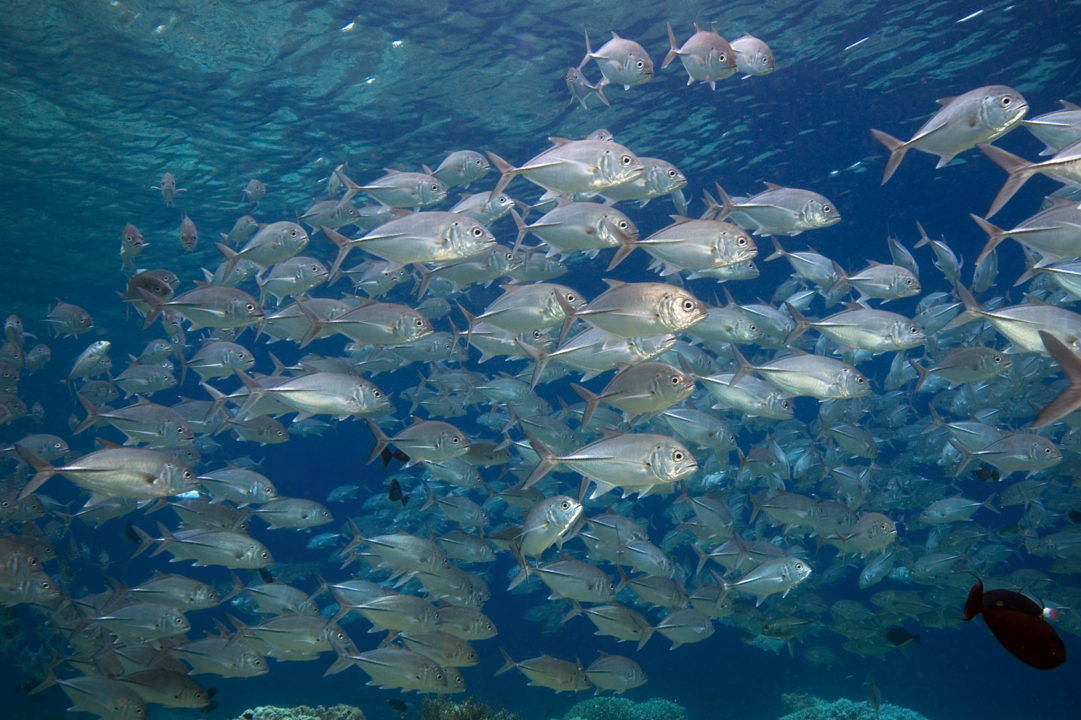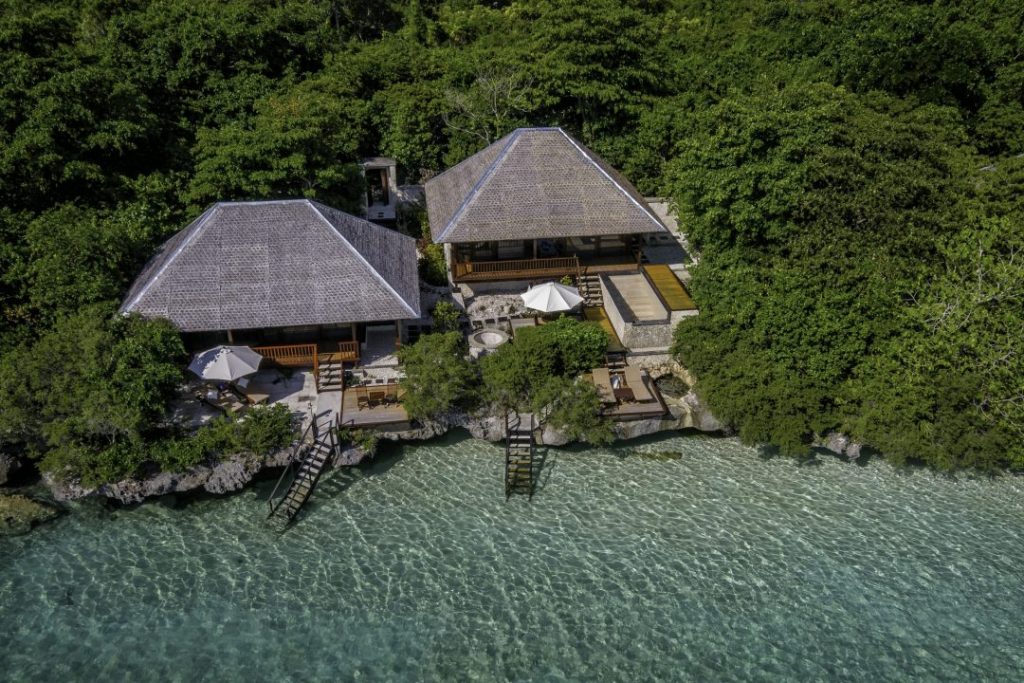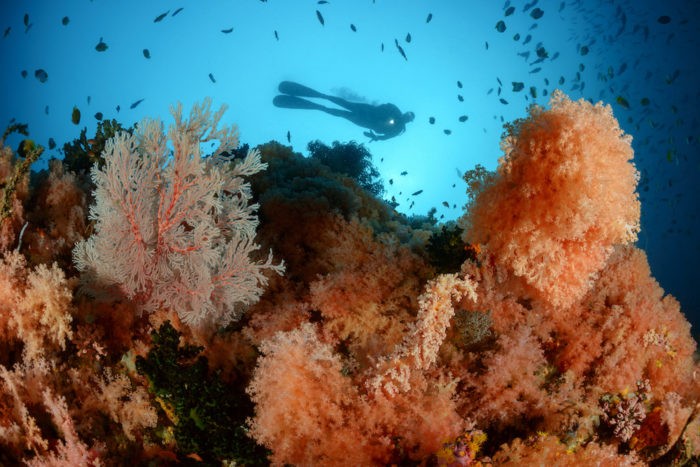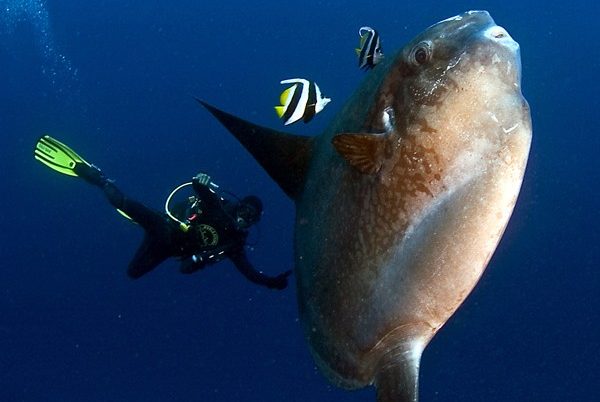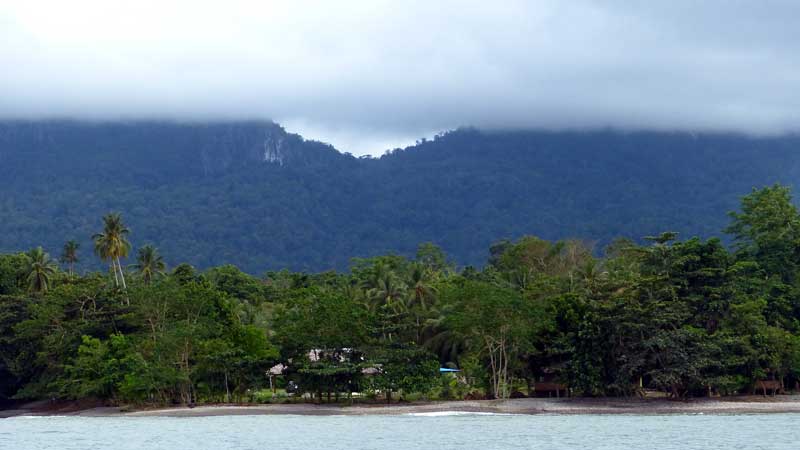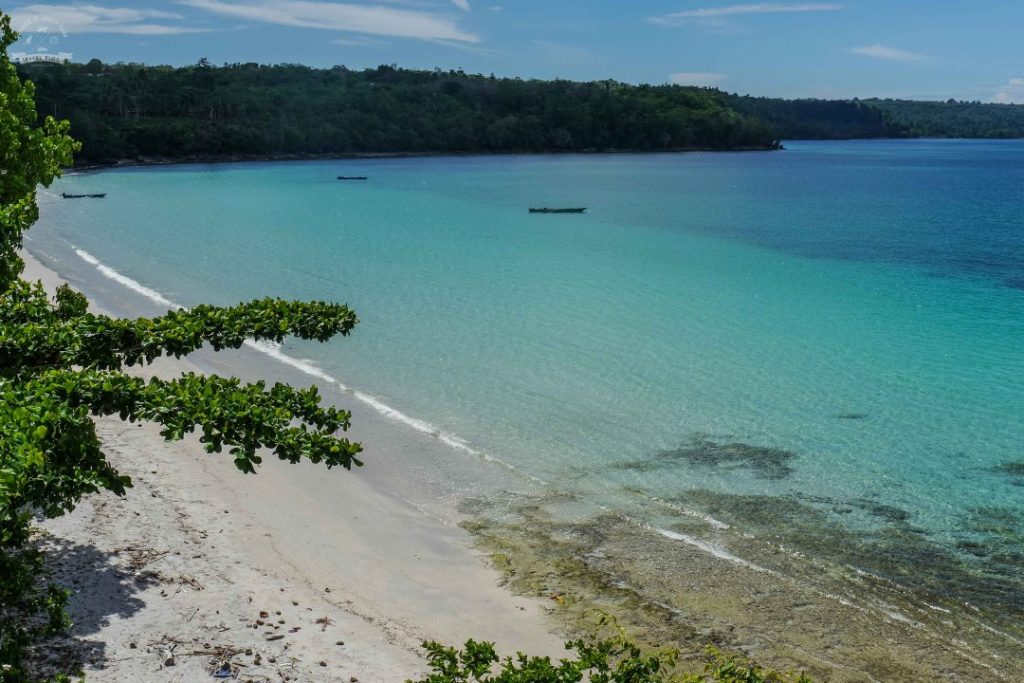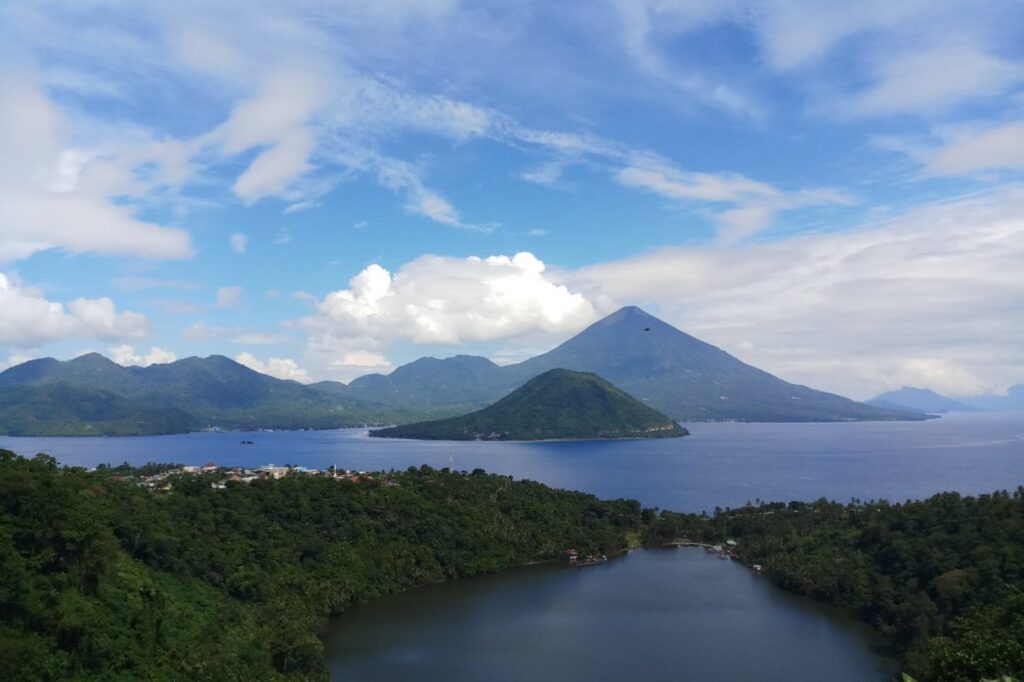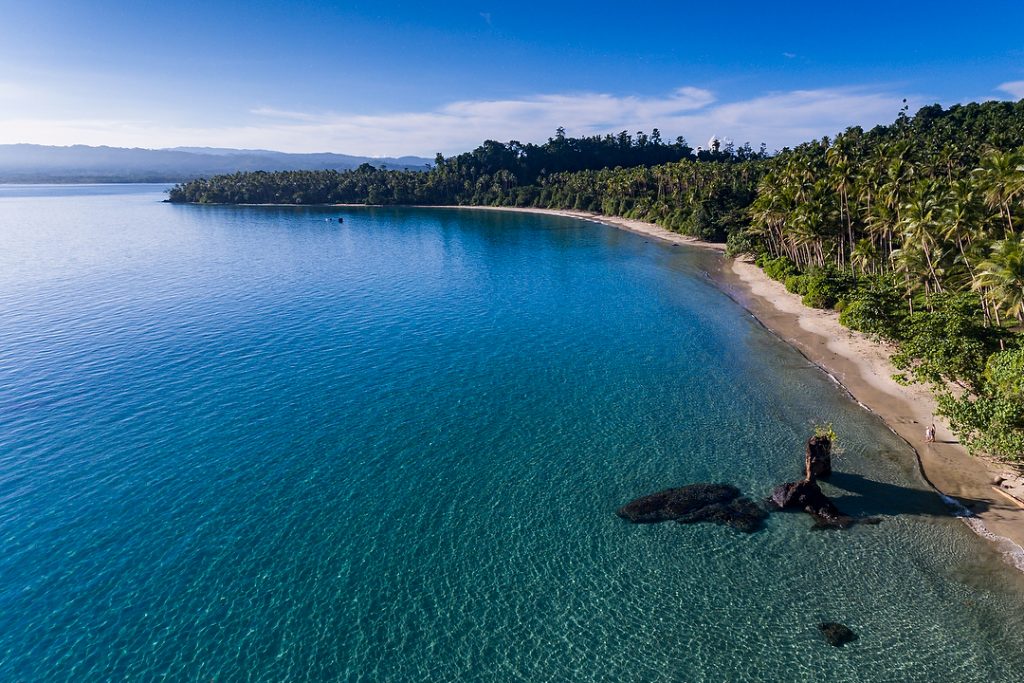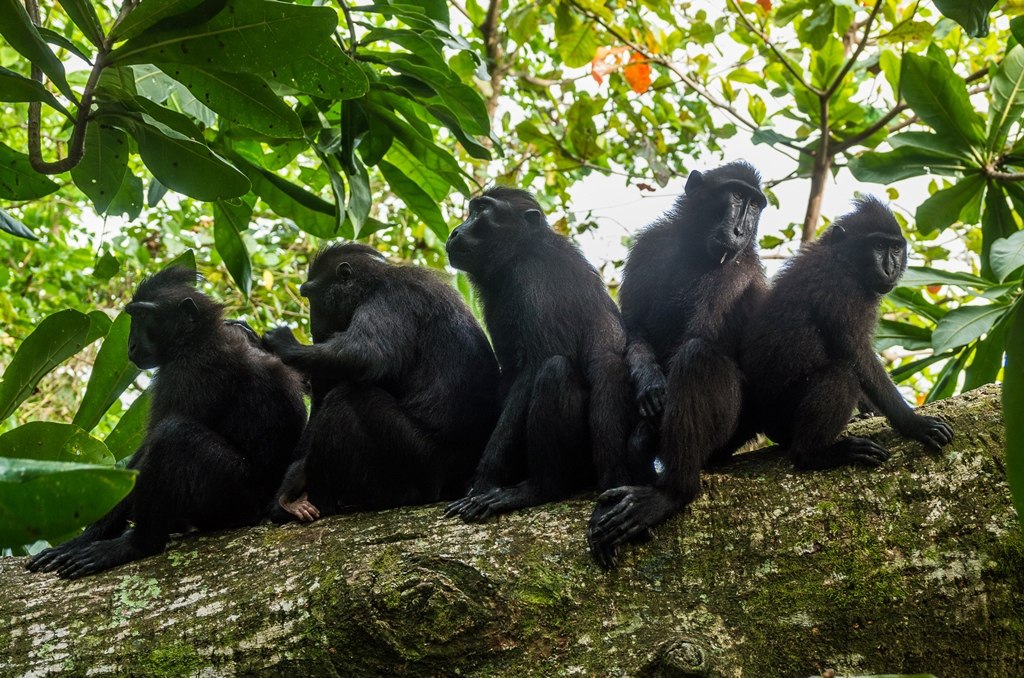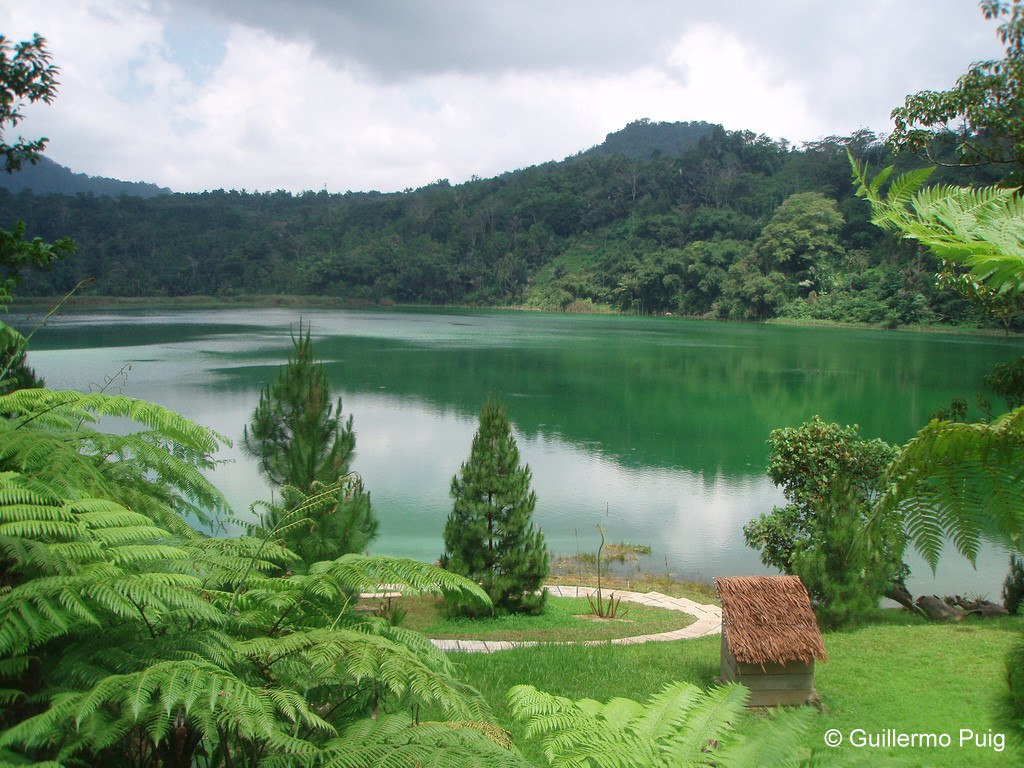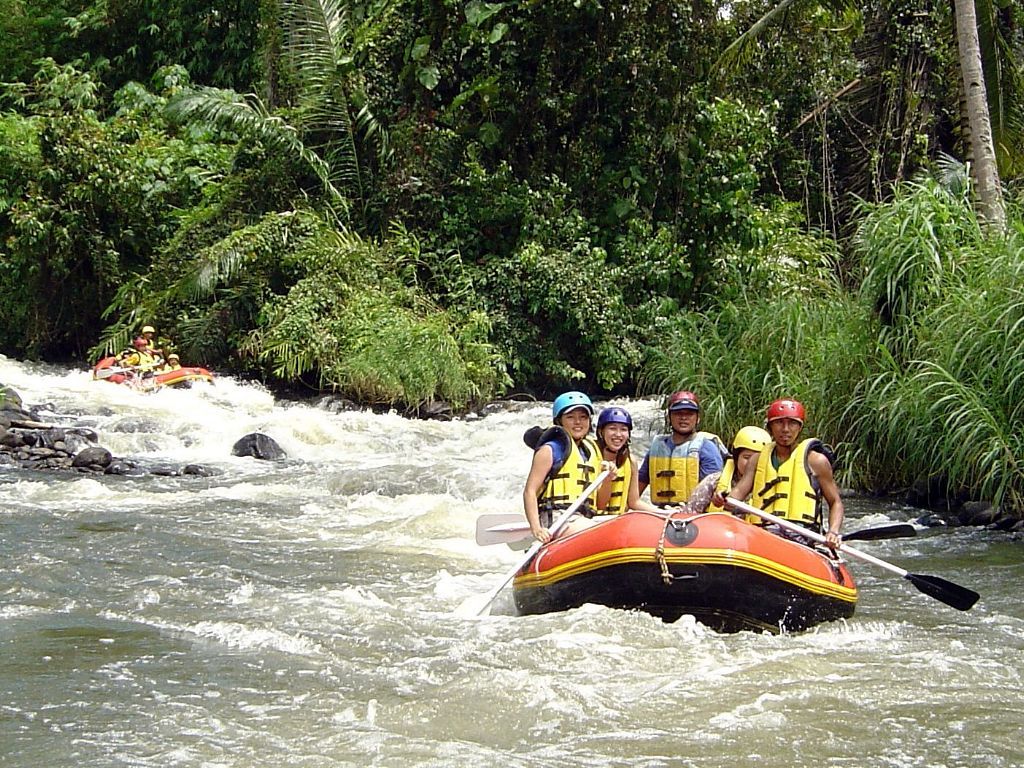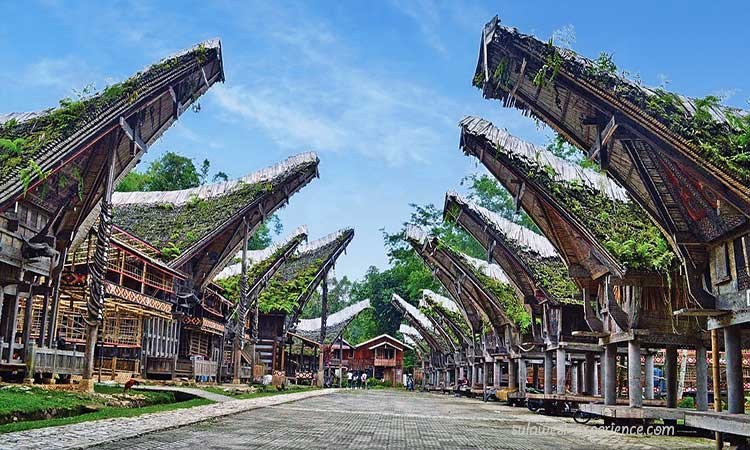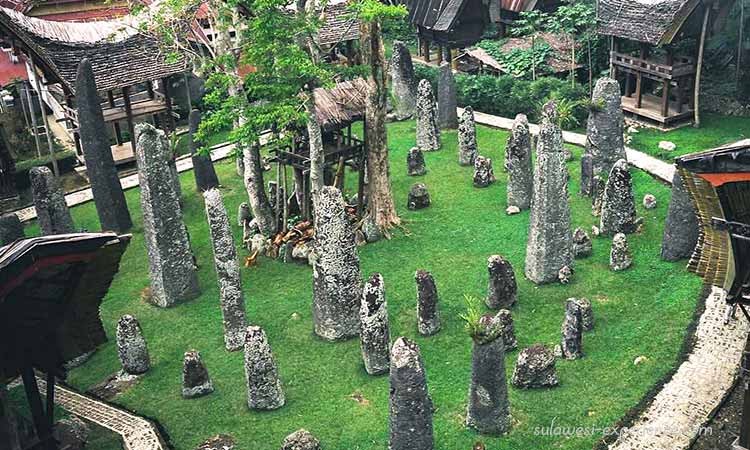Maluku - Ambon & Banda Neira
-
September to May for Ambon
April & October for Banda Neira
- Courses
- Nitrox
- DIN & Yoke
- 22+ Days
The legendary Spice Islands, known as one of the best muck diving destinations on the planet, with a full range of macro critters, as good as anywhere – and there are no crowds! This is your chance to see perhaps the rarest underwater critter of them all; the Psychedelic Frogfish, only found in Ambon! Tourism is not yet highly developed in Ambon so staying a while here will give you the opportunity to experience the ‘authentic Indonesia’. The Banda Islands are located 180 km southeast of Ambon and surrounded by the 5000 m deep Banda Sea! Under water, you will find some of the world’s best and healthiest coral reefs and have a chance to witness schooling hammerhead sharks! (If you want to visit Ambon only, this is possible).
Maluku - Ambon & Banda Neira
September to May - Ambon
April & October - Banda
22 Days From € 2800 / Person
16 Dives From € 600
(Based on double occupancy)
(All Flights Included)
Ambon
Ambon is a horseshoe shaped island, with Ambon Bay reaching about 20 miles into the centre, surrounded by a tropical landscape of lush green hills. The regional capital is Kota Ambon.
Apart from the incredible diving, many other activities are available. We can organize a car with a driver and/or a tour guide for sightseeing.
You can spend the day at the beach, snorkeling and sunbathing, soak in a hot tub, visit one of Kota Ambon’s unique coffeehouses, or just wander around the many friendly, bustling markets and colourful streets.
Local adventures include a visit to the “fresh water eels” in Larike, which are harmless and so tame they swim into your hands.
If you are interested in jungle trips, a guide can help you find exotic birds and amazing butterflies.
And if you want to explore the island yourself, it is best to rent a scooter and drive along the coast road. The guesthouse is happy to help you organize a scooter.
In the surrounding area also many idyllically remote and untouched islands are in easy reach for you.
Ambon is a perfect location to continue your trip and visit some other remote islands in the area.
You can plan a combined dive tour between Ambon and the renowned Banda Islands or what about Ambon and off-the-beaten-path Saparua!
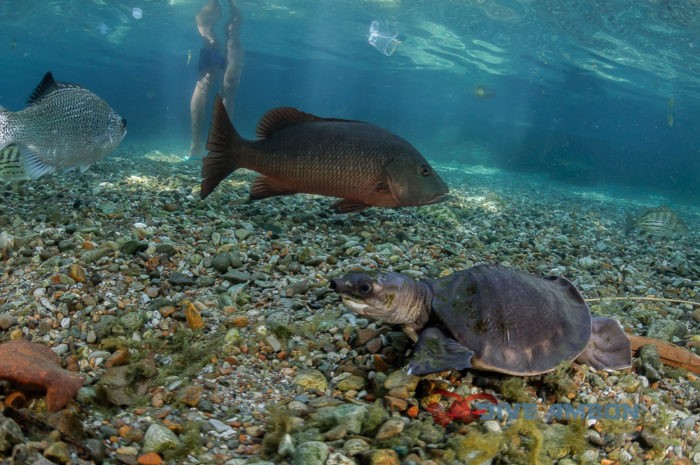
Banda Neira
It is a big adventure and a part of the journey just getting to the Bandas. The Banda Islands are located 180 kilometers southeast of Ambon and are surrounded by the 5000 meter deep Banda Sea! There are several different boats / ferries going between Ambon and the Bandas, and depending on the season, we recommend different ones.
Banda Neira is the most densely populated island of the Bandas and you can find restaurants that serve excellent Bandanese food with a special combination of spices.
The Bandanese mainly live from fishing and from the export of spices such as nutmeg and cinnamon. With each step you take on Banda, its history becomes visible – for example in the islands’ colonial buildings and museums.
If more people knew about the secret fame of the island Rhun, for example, the Bandas would definitely attract much more attention worldwide: Pulau Rhun was traded between the Dutch and the British against what is now Manhattan, New York. Some Bandanese tend to say now that the Dutch – who received Pulau Rhun for giving away Manhattan – made the much better deal.
The volcano island, Gunung Api, is a prominent feature of the Bandas. Gunung Api last erupted in 1988 and from its 656 m high peak you can still look down into the crater and feel warm vapor streaming out of little cracks in the rock. Walking up takes about 1.5 to 2 hours and is nicest early in the morning to watch the sun rise behind Banda Neira. The hike up leads you through a dense forest that becomes thinner the closer you get to the top. You will actually pass four different zones of vegetation.
For adventurers, the island of Banda Besar (approx. 2 km from Banda Neira) offers dense forests with interesting wildlife to be discovered. A Hike from the village Lonthoir, on top of the hills in the west of Banda Besar, across the mountains to the southern villages and beaches will reveal mostly untouched forests where – with a little luck – you have the chance to see tropical birds and Cuscus, a huge-eyed nocturnal marsupial.
But not only Banda’s forests are mostly untouched: Under water, you will find some of the world’s best and healthiest coral reefs. With more than 300 hard coral species and more than 500 fish species, the reefs give you the impression of diving into a different world of hundreds of different colours and motions.
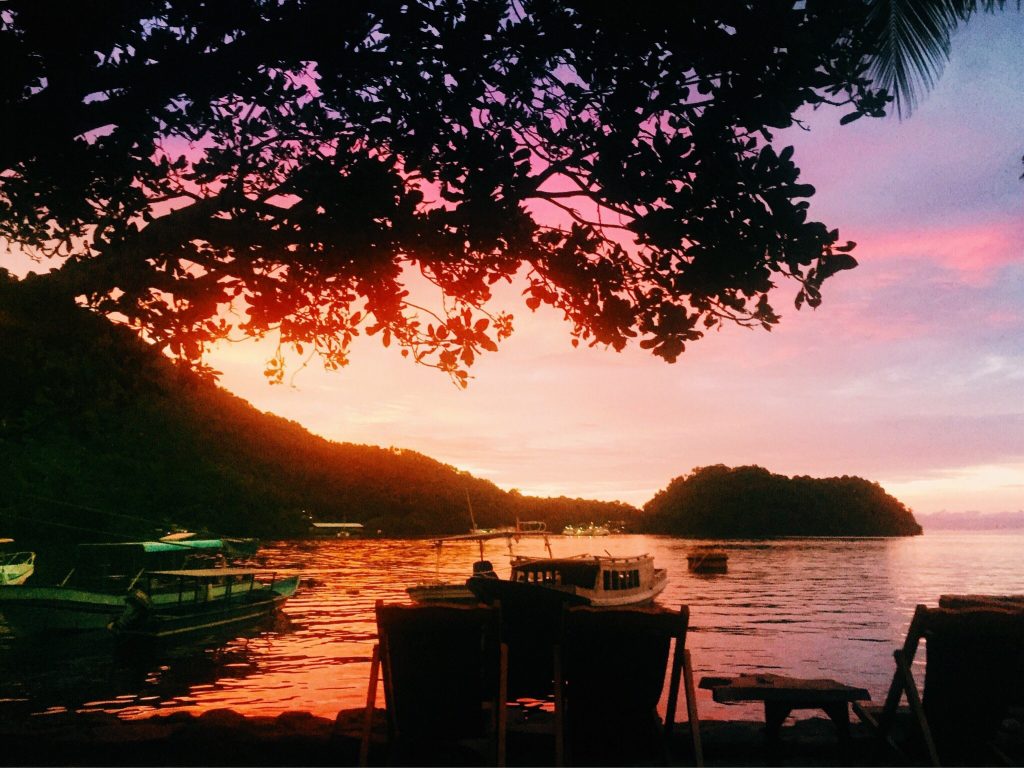
Diving Ambon
Ambon Bay, or Teluk Ambon in Indonesian – Where the muck diving is extraordinary!
Ambon Bay has an incredible array of rare critters, including Ambon Scorpionfish, Rhinopias, Mimic and Wonderpus Octopus, Flamboyant Cuttlefish, many many Nudibranchs, Frogfish, Harlequin Shrimp, Coleman Shrimp and much much more!
There is also always the chance to see perhaps the rarest underwater critter of them all – the Psychedelic Frogfish, only ever found in Ambon.
Muck diving usually takes place in brackish water, mangroves and harbours- environments that offer many possibilities for shelter. Competition for food and habitat is less and the pressure from predators is lower than in a coral reef. Critters in these environments have evolved incredible shapes, colours and behaviors. Discovering and observing them is uniquely fascinating – Muck diving is highly addictive!
Between October and May we can dive on the south side of Ambon and around Haruku Island to the east, where we have wonderful coral walls, sea mounds, drop-offs, swim-thru’s, larger fish and wonderfully clear water. It’s not all about the muck and we love clear water diving too. The south side of Ambon and Haruku is largely virgin diving with deep walls, incredibly healthy corals, swim-thrus and caves and sea mounds in Baguala Bay.
We have even found an incredible cave with stalactites and the home to a school of Flashlight Fish that mesmerize you when you turn your lights off. It’s the perfect twin for muck diving!
We do, of course, find macro critters here too. You can break out your wide angle lens and enjoy crystal clear water. If you want to keep you macro lens on, then we can find critters that we do not see in Ambon Bay.
We used to call the Clear Water Side the ‘wide angle side’, but we find so many unusual macro critters here that the name has changed.

Diving Banda Neira
Due to its remote location and the surrounding deep sea, the waters around Banda are extremely clear. Visibilities of 30 m are common and on some days you can experience 50 m +. The condition and health of the coral reefs are intact.
Most of the sites are wall dives characterized by huge sea fans, barrel sponges and orange soft corals. According to a survey that was conducted in November 2012, the Bandas are home of the largest Napoleon wrasse population in Indonesia known to date and you can see them on almost every dive.
On a closer look you will find hairy squat lobsters, whip coral shrimps, pigmy seahorses, leaf scorpion fish, ghostpipe fish and much more. Frequent turtle encounters can be expected at all islands.
Currents are moderate on most dive sites, allowing also beginners to have a relaxed and enjoyable dive. At some islands there are caves waiting to be explored and the islands of Hatta and Ai are awaiting you with an extraordinary diversity and cover of hard and soft corals. For the lucky ones among you, there is a chance to encounter hammerhead sharks.
The Banda Islands have at least 30 dive sites, all of which have a healthy reef ecosystem with huge sea fans, sponges, and never ending beds of hard corals. The sheer amount of fish, both large and small, is astounding.
Big fish and pelagic creatures are definitely the most obvious attractions for divers in Banda Islands, such as hammerhead sharks, dogtooth tuna, mobula rays, and many more.
Interesting topography such as spectacular archways in Hatta Island and the abnormal overgrowth of hard corals in Lava Flow will make your diving in Banda Islands a truly memorable experience.

Season – Ambon
Ambon does have a diving season.
We are closed from mid-June, July to the end of August every year, due to the South East Monsoon.
- September to mid-October: Muck Diving only.
- mid-October to mid-May: Muck diving and all the clear water south and east coast sites.
- mid-May to mid-June: Muck Diving only.
The water temperatures are between 26° and 30°C. Because of the mostly very long dives we recommend long diving suits of 5mm but of course a 3mm can do.
In January there is usually stronger winds, so it is likely that we will not be able to dive outside the bay. The rest of the diving season we usually have good dive conditions with 15 meters visibility.
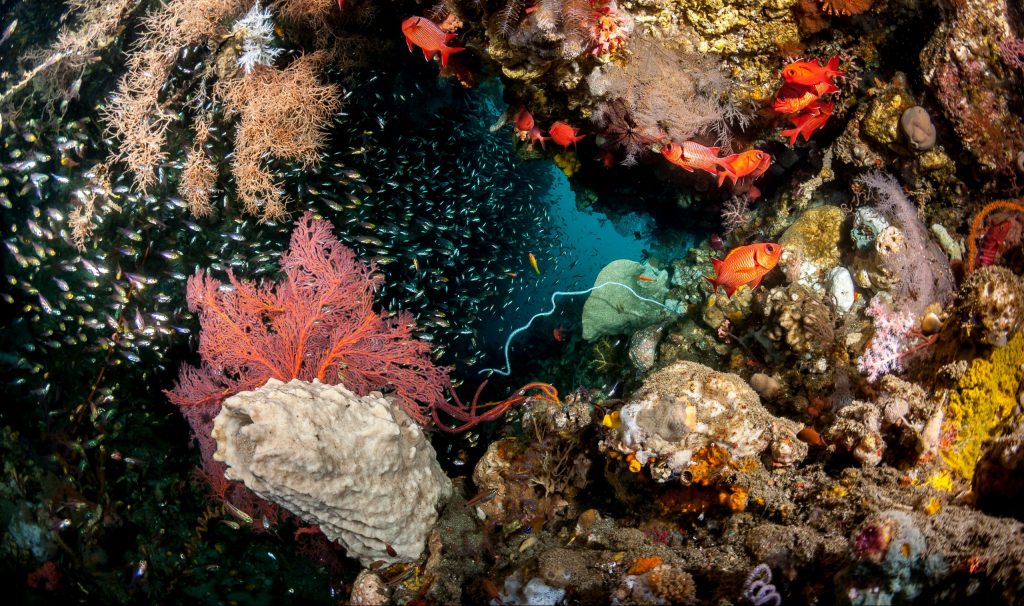
Banda Neira – Season
Every season in Banda has its own appeal: The transition seasons from October to November and March / April are spoiling you with magnificent visibility whereas the more turbid plankton-rich times after the southeast monsoon in August and September will surprise you with incredible numbers of fish and more frequent encounters with larger pelagics.
The water temperatures are between 26° and 30°C. Because of the mostly very long dives we recommend long diving suits of 5mm but of course a 3mm can do.
Despite the fact that you can dive around the Banda Islands many months of the year, logistics play an important role in our choice of season.
We have narrowed it down to the months of September, October, November & March, April.
This time is the most reliable for sea conditions to reach the Banda Islands from Ambon. But please bear in mind, that this is the ocean and if the weather doesn’t behave, you might need a few extra days as a buffer in Banda or Ambon.
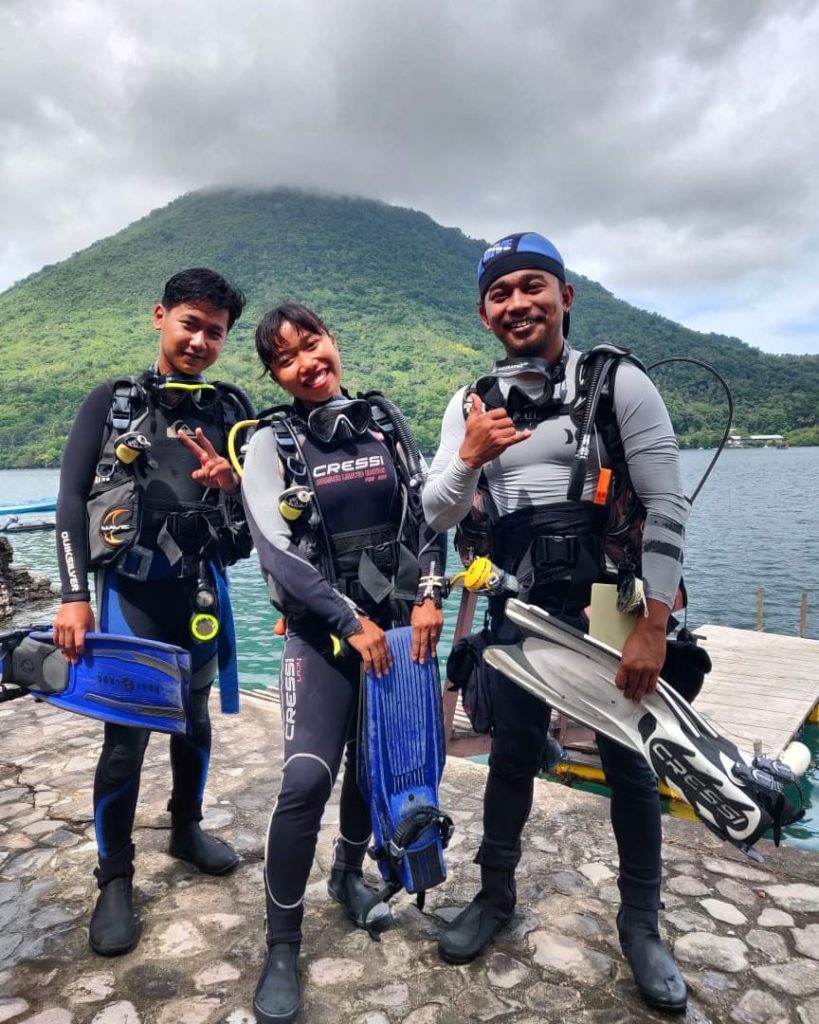
Included
Included
- International Flights
- Domestic flights to & from Ambon / 20 kg’s checked baggage included
- Airport pick-up by private car (Denpasar, Manado, Makassar or Jakarta International Airports)
- Car transfers to & from resort Ambon
- 2 nights in a 4* hotel w/ breakfast
- 9 nights in Ambon w/ full board & free mineral water + hot water for tea/coffee
- 8 nights in Banda Neira w/ full board & free mineral water + hot water for tea/coffee
- Pre-booked Dive Package
- *Fee to Rejsegarantifonden
- Full package tour – See the benefits of being covered by the Full Package Act and Regulations here
*A Danish Travel Guarantee Fund covering all European citizens in case of bankruptcy: link
Not Included
- “Visa On Arrival” ~ €30
- *Ferry tickets Ambon / Banda
- Banda Marine Park fee ~ €2 / day
- Tips for the staff
- Airport departure tax ~ €10
- Personal Travel Insurances
- Dive Packages
- Anything not listed in “Included”
*Easily bought on the day of departure at the harbour. Tickets cannot be pre-booked.
A Domestic Flight or Along the Way:
North Sulawesi
The Lembeh Strait
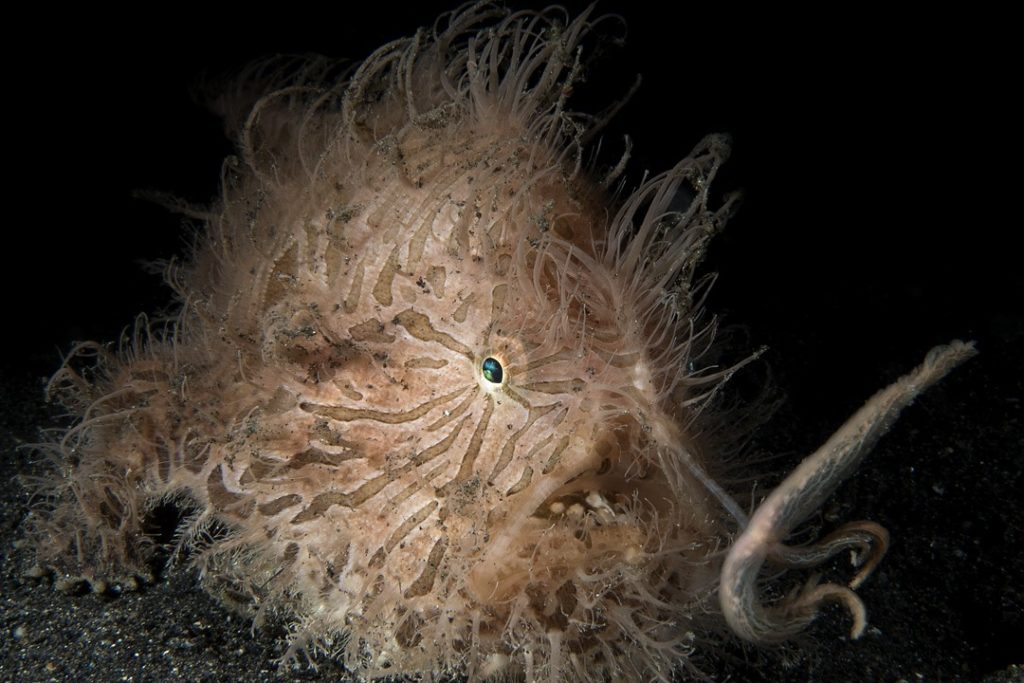
Muck diving capital of the world. Life has evolved without the ordinary reef fish. Along the way via Manado!
North Sulawesi
Pulau Bunaken

World-class walls full of turtles, exciting drifts, reef sharks and napoleon wrasses. Along the way via Manado!
Raja Ampat
Homestay w/ Resort Diving
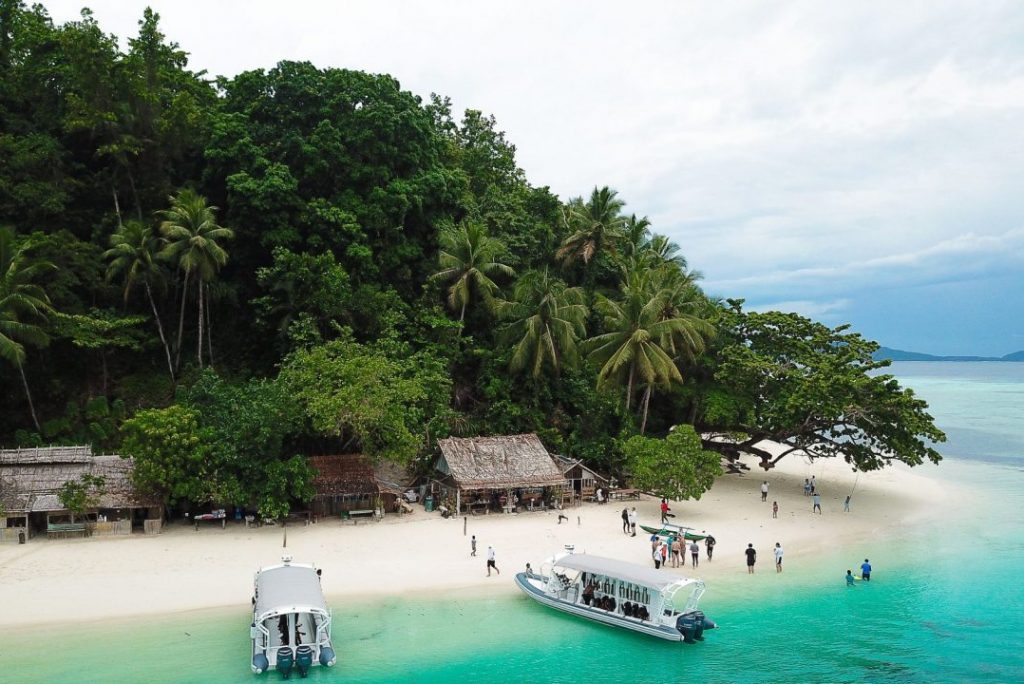
Stay in a homestay – But dive with a resort! In the heart of iconic Raja Ampat sites. One domestic flight away.
West Nusa Tenggara
South Lombok
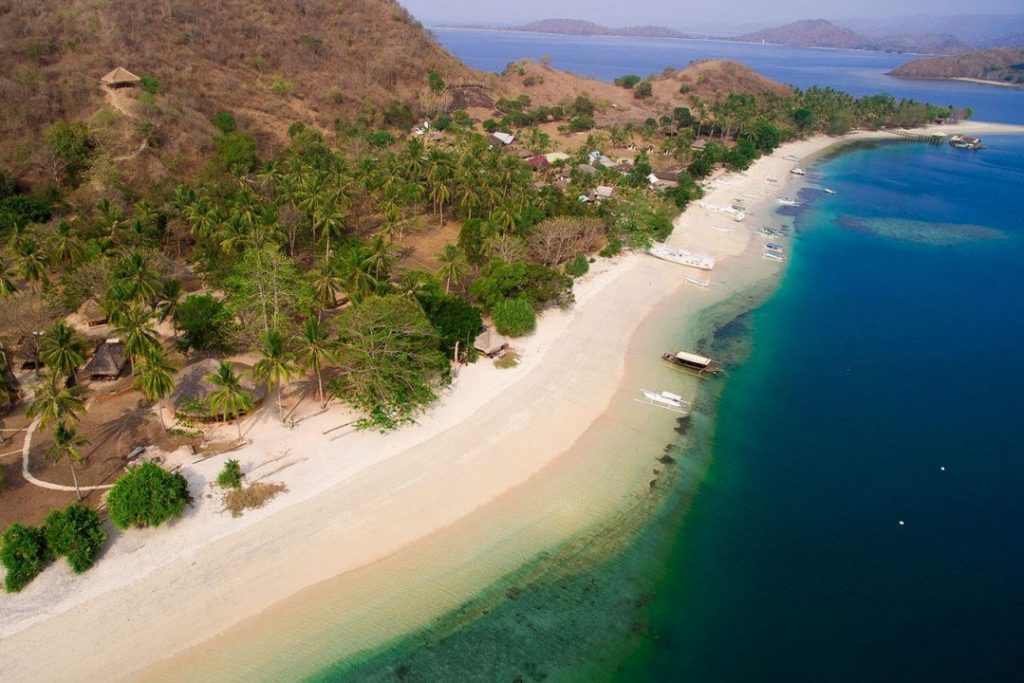
From the secret Gilis you can dive 2 areas of South Lombok – Belongas Bay: Pelagics! Two domestic flights away.
Kaimana
Triton Bay
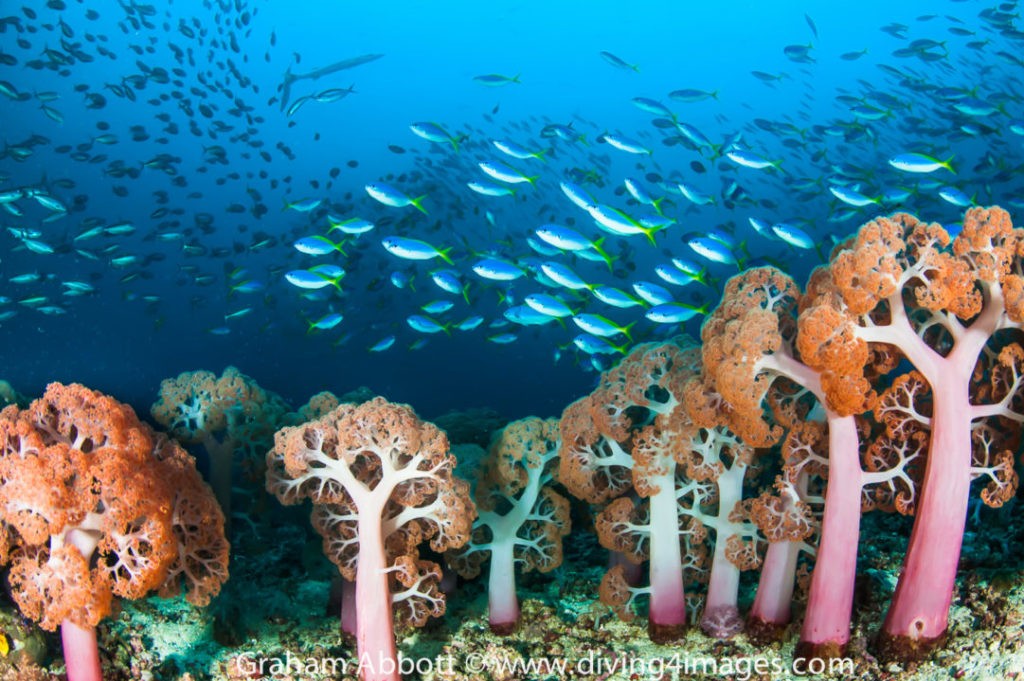
Remote and worth it! Whale sharks and soft corals in the heart of the Coral Triangle. Two domestic flights away, but…!
East Nusa Tenggara
Komodo & Flores
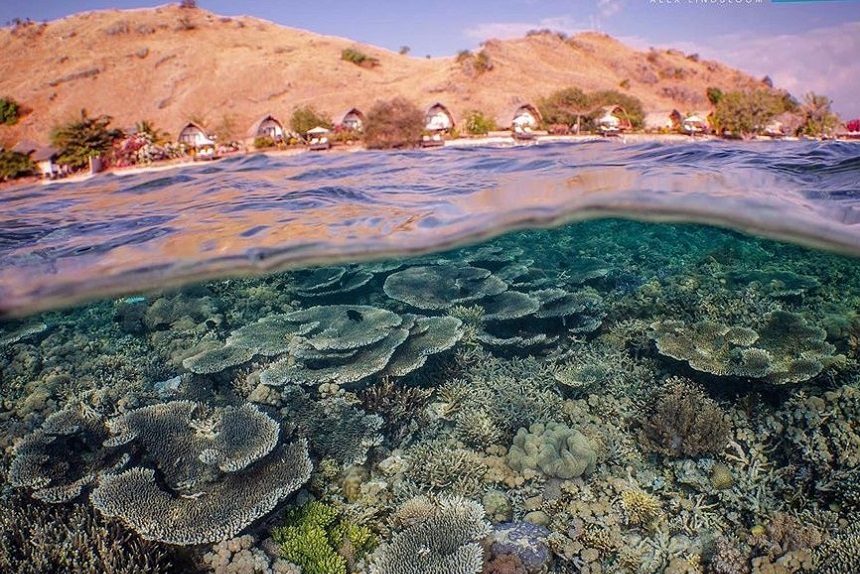
Komodo dragons, strong currents, manta rays, sharks, macro, Unesco Heritage sites. Three domestic flights away.
Maluku:
Arrival is via Pattimura Airport in Ambon. From there we take the ferry to the main island of Pulau Seram and then continue with our air-conditioned minibus.Surrounded by jungle and away from traffic routes and towns, you can still enjoy pure nature, discover new things above and below water and really let your soul dangle. Off the beaten track, we are the only resort here that offers relaxed diving in small groups with and without a guide. Directly in front of our resort there is an extensive and varied house reef with intact coral formations, huge sponges and various schools of fish as well as an unbelievable macro variety.
Here you can be prepared for surprises, as dolphins, turtles and mobulas are repeatedly sighted.
Our house reef can be easily reached from the beach at any time.
We drive to the surrounding dive sites with our boat, which is suitable for 4 to 6 divers, within 5 minutes. Depending on the spot, night, deep and drift dives are possible.
Since many dive sites have not yet been explored, it is a good idea to go on a discovery tour with us.
There are always filled tanks ready so that you can dive at any time of the day as you wish.
We do not offer courses and do not rent dive equipment. However, we have a limited number of equipment available for emergencies. On request, we can provide a local guide who is familiar with the area.
For nature lovers, we offer guided tours in the vicinity to explore the rich flora and fauna in the partly untouched jungle.
Numerous waterfalls, water cascades and gigantic trees will leave indescribable impressions. Hidden lakes with their incomparable shore vegetation and their biodiversity and hikes on natural, lonely beaches invite you to enjoy.
From Ambon you take a short boat ride to Saparua.
Saparua is a rarely visited part of Indonesia for tourism, making it an even greater cultural experience. The dive sites surrounding the islands are both macro subjects and corals reefs largely untouched.
Saparua is about an hours boat journey to the east of Ambon – and on the way you pass by the picturesque islands of Haruku and Molana.
Saparua is the largest and most populous of the Lease Islands just east of Ambon, the capital of Maluku province.
With its friendly population (mostly Christian), pretty villages, plentiful historical relics, good beaches and pristine coral reefs, Saparua is an ideal, authentic escape from Ambon.
Saparua has a good network of roads connecting all villages to Saparua town (Kota Saparua) in the island’s centre. Bemos serve most villages, and of course there are ojeks, too. If you explore the island by car or scooter you can visit historical sites such as the semi-traditional baileu village hall or Kota Saparua – the islands sleepy capital.
On the sea-side of Kota Saparua there are attractions such as a large, old Dutch Fort – Duurstede Fort – dating back to the 17th century.
Kota Saparua has a daily market in the town centre, but it gets a whole lot busier on Tuesdays and Saturdays when people come here from all over the island, as well as from neighbouring Nusalaut and Haruku.
This is a good example of a traditional Malukan market, with mostly typical local products / foods – like basketfuls of raw sago.
The village of Ouw in the south-eastern corner of the island is Saparua’s most interesting, offering a number of attractions: a small fort, pottery-making, and two fine beaches (a few kms away).
Other beaches include The West Coast Beach – What locals claim is the finest, longest beach on the island, stretches along its western coast between the villages of Kulur and Porto.
Laino Beach is one of Saparua’s most secluded and finest beaches, with the added attraction of views of Molana Island to the south. A few dedicated locals visit it on weekends, otherwise it is totally deserted.
Saparua is bordered by Seram Island in the north, the Banda Sea in the south and Ambon Island in the west. This location makes remote Saparua surrounded by the deep Banda Sea and due to the depth of the sea, the waters around the Lease islands are very clear.
There is excellent visibility up to 40 metres from February till May and a little less during the more turbid plankton-rich times after the southeast monsoon in August and September. In those months there are enormous numbers of fish and more frequent encounters with larger pelagics.
The dive sites around Saparua, Molana, Nusalaut and Haruku are as interesting as they are varied.
They offer beautiful coral gardens and steep slopes sheltering a variety of colourful fish.
Around Molana and Nusalaut there are spectacular steep slopes along the reef’s edge, decorated with Cup and Soft corals, Sea fans, Sea whips and huge Sponges.
White and Black-tip reef sharks are frequently spotted here.
It is famous for its diversity of reef fish species, and its varieties of healthy hard Corals.
Brain corals, Pore corals, and small Acropora and Table corals thrive in big areas. Then there are many Vase, Tube and Barrel sponges with Featherstars hanging on to every available surface. Many different species of Butterflyfish, Angelfish, Surgeonfish, Groupers, Anthias and even Giant flatheads are to be found. When the conditions are right it is like diving in a huge aquarium.
Some of the lesser known snapper species can be found such as the Pygmy snapper, the red Mangrove snapper, as well as huge Napoleon wrasse and silver Sweetlips.
Many many more different species can show up here. Even hammerhead sharks and different rays. Nature is teeming with life here.
You would need one more domestic flight to reach Ternate and Halmahera from Ambon.
Our crew will pick you up at Sultan Baabullah airport then heading to the hotel for early check in. Then we will have breakfast at the local restaurant where we will try Nasi Kuning (traditional rice dishes cooked in turmeric and coconut milk). After breakfast, we will visit the Museum and the Castle of the Sultan of Ternate. Inside the Castle there are relics and the oldest Holy Koran in Southeast Asia. Afterwards, we will visit Tolukko Fortress that was built by the Portuguese in 1540. Then we will have seafood lunch. Then we will visit Batu Angus – lava rocks formation from the Gamalama volcano explosion. Then we will visit Big Tolire Lake and Small Tolire Lake. In the afternoon, we will visit Jiko Malamo beach, to snorkel and relaxing. Then heading towards Muara Hotel for rest.
After breakfast, we will head to Bastiong harbour to sail to Filonga island. We will explore the island and snorkel here. Then heading to Tidore island. After lunch, we will visit the Castle of the Sultanate of Tidore, Tahulla fortress and Tore fortress then visit the Tidore’s Ikat production centre. Our trip continue to Gura Bunga village to see the Sowohi traditional houses. Then we will visit Juan Sebastian Del Cano arrival monument. Then in the afternoon we will sail back to Ternate island through Rum harbour. Return to hotel for dinner and rest.
After breakfast, we will visit Laguna Hills Lake to see Tidore island from afar and Maitara Mountain that are located in front of the lake. Then we will go to Kalamata Fortress and Orange Fortress which were built by the Dutch and became the centre of VOC (East Indies Company) headquarter. Then we will head to Sulamahada beach to relax and snorkel. After sunset, we will return to hotel to have dinner and rest.
Two short domestic flight further into Maluku.
The only sounds are the sea and the many birds. Except from the fireflies, luminescent mushrooms, stars, the moon and the incredible lighting of the sea, there is no light pollution at all. Nights at the beach are indeed magical.
The very clean, white sandy, 2.000 meters long beach is free of stones or dead corals. Moreover, the sea is very shallow for a long stretch. The reef in front is great for snorkeling and diving. The sandy parts offer good night-dives and critter spotting. There are no buildings at all on the beach.
Groups of dolphins frequently visit the bay. Sea turtles use the beach as their hatching ground, also the almost extinct and bizarre Coconut Crabs made this place their home and are easy to spot.
Beautiful rivers are the home of many birds and butterflies. Although small islands are usually not so rich in bird-life, here we see, among others, Horn-bills, many Common Paradise Kingfishers and Beach Kingfishers. The deeper parts of the river let you have a fresh water bath after the salty ocean.
Walking through the forest and lush gardens is like visiting a ferry-tale. The diversity of trees are huge!
Diving and snorkeling at the untouched reefs surrounding Rao, Morotai and the tenths of small islands at the northern outskirts of Halmahera, Maluku, Indonesia offers you everything you dreamed of!
Walls, slopes, schooling fish, coral gardens and even excellent “critter and macro diving”. In 2018 we found one of the sites which for sure offer the largest amount of huge schools of various fish anywhere: Jacks, Rainbow Runners, Snappers, Surgeon Fish and much more. All together at the same time.
This place is only 2 kilometers away from the beach where you stay. Your guide will be knowledgeable about the currents and the best times to dive. Moreover there is a lot of relaxed, beautiful diving around here in total pristine nature with no other tourists around.
It is possible to do self guided shore dives, under the supervision of the personnel from the beach. Two divers minimum – and perfect for an afternoon dive! Oh, and don’t forget to look out for the rare species of Eapulette Shark or better known as the Walking Shark…!
Via Manado / North Sulawesi:
Easy to read, only 2 hours drive from Manado. Located at the foot of Dua Saudara Mountain, the Tangkoko Nature Reserve is comprised of rolling hills and valleys with a variety of hardwood trees and unusual plant life. The animal life is also quite varied, and one can often view Tarsius tarsier (one of the smallest known primates), black tailless monkeys, snakes, spiders and kuskus (marsupials). Tangkoko Batuangus Reserve offers a suitable protective environment to help prevent these animals from becoming extinct.
Only one hour away from Tangkoko Nature Reserve (on the way) is Tasikoki Wildlife Rescue and Education Centre (www.tasikoki.org). Here you can observe many unique species from Indonesia, as well as several endemic to Sulawesi. All animals have been rescued from the illegal wildlife trade. When taking a tour of the centre (1.5 hours) you will learn about conservation of wildlife and nature as well as the rampant wildlife trade. After visiting the animals you can enjoy a vegetarian meal (with fish) together with the staff as well as the many volunteers from all over the world.
Price: $45/person as add-on only to a Tangkoko Nature Reserve trip.
Visit the Vihara Buddhayana (Buddhist Temple) near Gardenia Country Inn, then heading for the small village of Woloan, where you can see the Minahasan Style Houses being built, knock down style, ready for delivery or shipping. Then continue to the base of Mount Mahawu where we begin the 1-hour trek to the crater’s edge. From that vantage point we can see Bunaken & Manado Tua Islands, as well as the bay of Manado. At the bottom of the crater, one can observe a steaming lake and experience the smell of sulfur from the pools.
Then it’s off to see the traditional food & flower market in Tomohon, surprises in store for you!
You will have lunch at Tondano Lake, close to the goldfish farm, where you will enjoy the serenity of the lake. Then we travel to Pulutan Village, a cottage industry for making pottery or choose the Toraget Hot Springs. At the weaving factories you can observe the local weaving traditions being practiced. Last stop is Lake Linow (the changing color lake), a one of a kind experience.
Gorontalo can be reached by a 1 hour flight from Manado or an 9 hour scenic drive. You would be surprised by what Gorontalo has to offer in its forests with its endemic fauna as well as the unique diving of the Togian Islands.
Nantu Forest is located in the heart of the Wallacea region in Gorontalo Province. Wallacea is the wildlife transition zone between Asia and Australia named after its founder, Alfred Russel Wallace (1823-1913), a famous British biologist, naturalist, and anthropologist.
A community of approximately 30,000 people live within the Nantu and Paguyaman river watershed and is completely dependent on these rivers for its water supply. Nantu’s carbon content is invaluable. Nantu Forest is famous because it is the only place in the world to reliably see its other endemic inhabitants: the Babyrousa celebensis.
The remarkable “prehistoric” appearance of these mammals is largely due to the prominent upwards incurving canine tusks of the males, which actually pierce the flesh in the snout.
One of the most spectacular and thrilling adventure tours in North Sulawesi. The most popular rafting route is on the Nimanga River in Timbukar-Sonder. The grade of the rapids is level 3. You will be picked up at your hotel at 9:00 AM and driven to the village of Sonder (about 1.5 hours from the center of Manado) located in the Minahasan highlands.
Your journey down the 9 km long river will take about one and a half to two hours through scenic forests with a coffee break including traditional cookies. Don’t be shy to scream along the rapids because at the end you will scream for more. Every raft can hold up to six persons including an experienced guide.
After this wet and wild experience, it’s back down the mountain with a lunch stop in a local restaurant. You will arrive at your hotel or the city of Manado (approximately 1.5 hour ride) at approximately 3:00 to 4:00 PM.
Combine Landtours of South Sulawesi
On the southern point of Sulawesi Island, Bira’s nearest access point is through its capital, Makassar. South Sulawesi hosts some of the most beautiful beaches in Indonesia. The accommodation is located on one, and if you rent a motorbike and follow the coast north you will find a number of white, untouched beaches, caves and small islands.
Sulawesi is the largest island of the Wallacea region and hosts at least seven species of macaques that are endemic to the island, some of them occasionally paying a visit to our camp.
Bira is home of the Konjo tribe and the heart of maritime culture in Indonesia. The Birians have been sailors for as long as history has been recorded. To this day, shipbuilding and sailing remain the central focus of daily life and identity. About 70 percent of the population in Bira and surrounding villages make a living through work related to boatbuilding and navigation.
Diving Bira you will meet turtles, moray eels and quite a variety of small critters such as mantis shrimp, anemone shrimps, scorpion fish, a variety of nudibranches and much more. Pelagic species are trevallies hunting on the reefs. Other pelagics that are sometimes seen around Bira are thresher sharks, bull sharks, tiger sharks, hammerheads, tunas, barracudas, giant marble rays, manta rays, sunfish / mola mola and even whale sharks at the right time of the year. July to October seems to be having the most of these pelagic encounters – this is also when the water temperature drops a bit.Scuba Diving in Bira is done from April to November.
- Best diving conditions to witness pelagic life including bigger sharks, mola mola and manta will be in late summer when the water gets colder. This happens from July onwards to October. But of course no guarantees can be made on behalf of nature.
Day 01 : Makassar Arrival – Toraja (LD).
Meeting service at Sultan Hasanuddin Airport Makassar, then directly trip to Tana Toraja. The trip will pass some regencies in distance of 310 km (it’s about 8 – 9 hour drive from Makassar). On the way you’ll enjoy the beautiful rice field, fish pool and the Traditional Houses of Bugisnese which is adorn on the right and left side of the main road. Lunch will be at Pare-pare, one of the regencies we passing by in the distance of 175 km. After lunch the trip will be continue and will arrive in Tana Toraja about late noon, then check-in to hotel, dinner at the local restaurant, free program.
Day 02 : Toraja Tour – Batutumonga (BLD).
After breakfast at Hotel, check out then visiting Traditional weaving village at Sa’dan, traditional Toraja village with buffalo horns in front of their houses in Palawa then start trekking to Batutumonga its magnificent and fascinating mountain, rice terrace, coffee and cacao plantation, and green trees surrounding will give the trip more impressive one. By chance, you will meet the local people doing their activities in traditional way. Lunch will be served en-route with simple style. Afternoon arrive in Batutumonga, check-in at Guest house / Homestay, dinner and overnight at Batutumonga.
Day 03 : Batutumonga – Pana – Sariale Trekking (BLD).
Simple breakfast at Guest house or Homestay, check out, process to Pana Village for start the trekking in the country side through traditional farm, Torajan villages etc .. on foot. Lunch will be served en-route with simple style. During trekking you will find a beautiful landscape, paddy field, traditional Toraja houses, local people daily live and more. Upon arrive at Sariale Village, pick up then transfer to hotel for check in. Dinner at the local restaurant.
Day 04 : Toraja Fullday Tour (BLD).
Buffet breakfast at hotel, starting Toraja tour to visit The cliff-side stone grave with wooden effigies on the balcony at Lemo, the royal family tombs at Suaya, Ke’te Kesu (traditional wooden carving village and hanging grave), then lunch at local restaurant. After lunch continue the tour to visit Londa (the natural cave grave) and Marante (is a village where a lot of Tongkonan House, big paddy barns and big rocky hill containing hanging stone graves which the located called “Erong”). Afternoon back to the hotel, Dinner at the local restaurant, free program.
Day 05 : Toraja Fullday Tour (BLD).
Buffet breakfast at hotel, starting tour to visit Pallawa (The most beautiful village with buffalo horns in front off their houses), Kambira (Baby grave) then lunch at the local restaurant after that continue the tour to visit Lokomata (the boulder grave) then visit Sa’ dan To’Barana, the traditional cotton weaving village. Afternoon back to the hotel, Dinner at the local restaurant, free program.
Day 06 : Toraja – Makassar Departure (BL).
Buffet breakfast at hotel, check out then leaving to Sultan Hasanuddin Airport Makassar. The trip will be take about 8 – 9 hour drive. Lunch will be served at the local restaurant in Pare-pare, afternoon arrival at Sultan Hasanuddin Airport for flight back to home or others destination. End program.
Day 01 : Makassar Arrival – Toraja (LD).
Meeting service at Sultan Hasanuddin Airport Makassar, then directly trip to Tana Toraja. The trip will pass some regencies in distance of 310 km (it’s about 8 – 9 hour drive from Makassar). On the way you’ll enjoy the beautiful rice field, fish pool and the Traditional Houses of Bugisnese which is adorn on the right and left side of the main road. Lunch will be at Pare-pare, one of the regencies we passing by in the distance of 175 km. After lunch the trip will be continue and will arrive in Tana Toraja about late noon, then check-in to hotel, dinner at the local restaurant, free program.
Day 02 : Toraja Fullday Tour (BLD).
Buffet breakfast at hotel, starting Toraja tour to visit Kete’ Kesu (traditional wooden carving village and hanging grave), Marante (is a village where a lot of Tongkonan House, big paddy barns and big rocky hill containing hanging stone graves which the located called “Erong”), Bori menhir stones, soared up several meters above the land and then lunch at local restaurant, after wards continue tour to visit Pallawa (The most beautiful village with buffalo horns in front of their houses) and Lokomata (the boulder grave) then visit Sa’dan To’Barana, the traditional cotton weaving village. Afternoon back to the hotel, dinner at the local restaurant, free program.
Day 03 : Toraja Fullday Tour (BLD).
Buffet breakfast at hotel, starting Toraja tour to visit Londa (the natural cave grave), Lemo The cliff-side stone grave with wooden effigies on the balcony, the royal family tombs at Suaya then lunch at local restaurant. Afterwards continue tour to visit Kambira (Baby grave) and Sangalla, village lying among the leafy bamboo trees and the tomb of King Sangalla. Afternoon back to the hotel, dinner at the local restaurant, free program.
Day 04 : Toraja – Makassar Departure (BL).
Buffet breakfast at hotel, check out than leaving to Sultan Hasanuddin Airport Makassar. On the way we will stop to visit the Jesus statue, which is known as one of the highest statues in World, than continue trip back to Makassar. Lunch will be served at the local restaurant in Pare-pare, afternoon arrival at Hasanuddin airport for your flight to the next destination.
Bali – Island of the Gods
Many Tours
Duration Half to Full Day
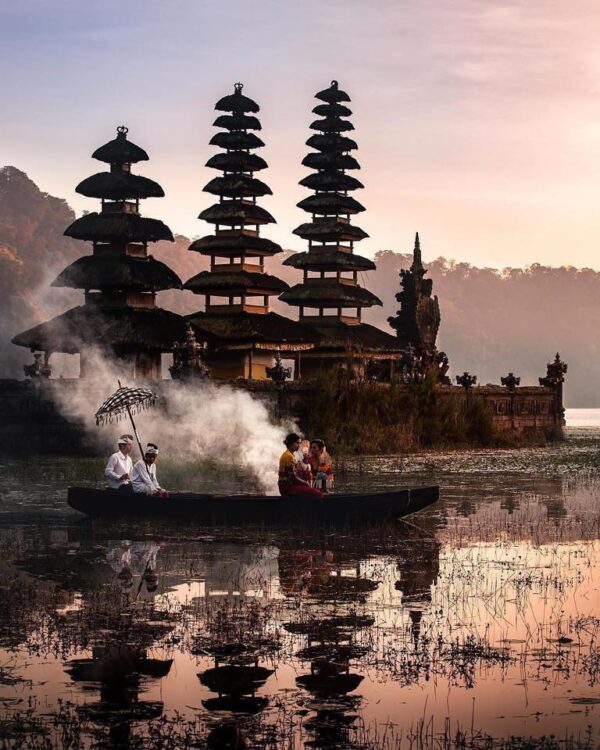
There are so many things to do in Bali, so instead of listing all of them let us know your interests. Temples, waterfalls, hiking, motorbiking, rafting, cooking, rice fields, coffee etc.
We can tailor make daytrips.
You can visit Ubud, which is a famous town in Balis inland surrounded by rice fields. Here are many many restaurants and souvenir shops and the Monkey forest where the small monkeys roam around and can get a bit nosy around tourists.
Uluwatu Temple is a Balinese Hindu sea temple built at the edge of a 70-meter-high cliff projecting into the sea. A Kecak dance performance based on the Ramayana is performed daily in Uluwatu temple at every 6pm on the cliff-side. The performance which is outdoors also shows the beautiful sunset at the background of the performance
Tanah Lot is one of Bali’s most important landmarks. Its unique offshore setting provides the perfect backdrop for sunset photos. Constructed in the 16th century to honor the Hindu sea god, Baruna, Tanah Lot is one of Bali’s most-visited landmarks.
The Mount Batur hike in Kintamani, Bali is one of the most popular and enjoyable sunrise trekking experiences you can have in Indonesia. It’s not very hard to do the Mount Batur trek from any part of the island, and the guided trek takes you up a still active volcano — Gunung Batur — with a summit elevation of more than 1,700 meters. A perfect way to catch the sunrise. You drive up to around 1200 meters and walk the last 500 meters. Total duration up and down is 2-4 hours.
Q & A
Yes beginners can dive here and even take courses.
In Ambon, depending on where you stay, the boat will be out for 2 or 3 dives if you stay at Dive Into Ambon.
In Banda you go out for 2 dives and then return.
Great!
Please contact us for further details.
We highly recommend booking the dives as a package. This will give you a better price, and the dive center will know that they should be ready for you.
Yes, this is a very good option. You could also combine Ambon with many other interesting destinations. See our Combine menu.
Most dive places in Indonesia use the “International” Yoke connection for the regulators 1st stage.
If you have a DIN 1st stage you can buy a DIN to Intl. Yoke converter. It is very easy and convenient.
Yes there are ATMs in both Ambon and Banda Neira.
However, the ATM in Banda can be unreliable, and there is only one. So we highly recommend to bring enough cash.
You could also pay by visa, or get a Wise account, which may be the smartest way to pay digitally.
There are good hospitals in Ambon.
In Banda there are none.
Ambon and Banda is having a risk of malaria – more so in the rainier months of January / February. See our “About” menu on how to prevent malaria.
Gastrointestinal diseases: Make sure you have some rehydration salts and basic medicines on hand. (Consult your doctor regarding appropriate medicines before you go.) Anti-diarrhea medicines like Imodium are best taken only if you have to travel – they only treat symptoms, not causes. Drinking only boiled or otherwise purified water will greatly reduce your chances of stomach troubles. You can read more about drinking water here.
Skin and wound infections: You should clean and treat even small wounds immediately with an antiseptic, and then examine them regularly for signs of infection. Especially if they are coral scrapes, which are notorious for going septic. Keeping wounds dry until healed is also good practice, but it’s a big ask when you’re on a short stay in the islands. Fungal infections love a tropical environment too, so you might want to consider having some antifungal medicine in your first aid kit.
Ear infections: Spending a lot of time with water in your ears in the tropics raises the risk of ear infections, so if you’re concerned pack an appropriate medicine.
Japanese Encephalitis and Dengue Fever: These mosquito-borne diseases have been reported from Flores and are present more or less all over Indonesia and most of South East Asia. You might want to consider vaccination for Japanese Encephalitis. Avoiding mosquito bites is the only protection available against Dengue Fever.
Tropical diseases: All tropical environments harbour parasites and pathogens not found elsewhere. You’re extremely unlikely to come into contact with any of those during a short holiday in Indonesia, but if you suffer any persistent or recurrent symptoms that can’t be diagnosed or aren’t relieved by standard medical treatment – even if those symptoms appear months after your visit – you should consult a tropical diseases specialist.
See our “About” page to know more about prevention of moscuito bites.
For further reading on health: https://www.iamat.org/country/indonesia
